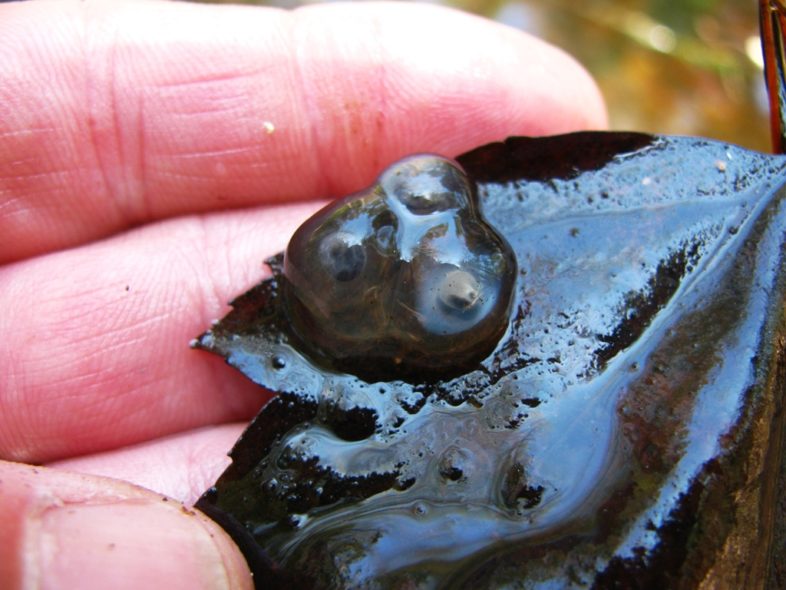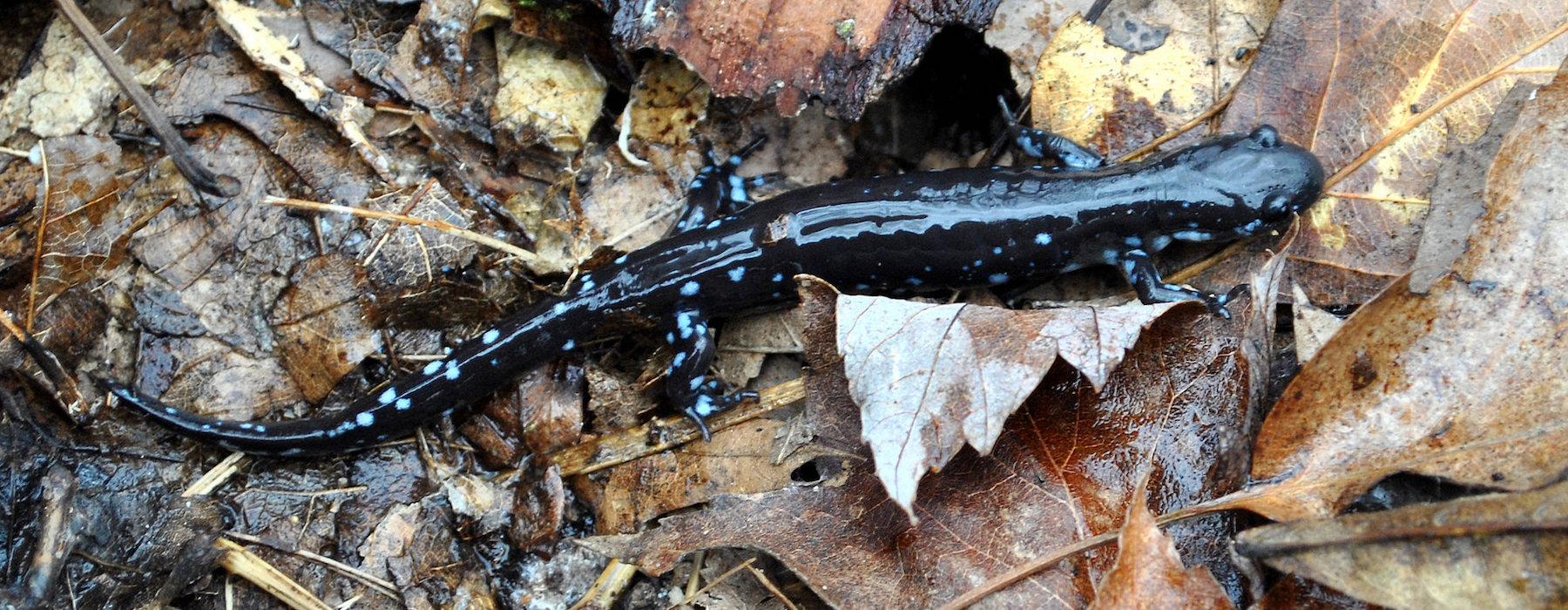The Blue-spotted Salamander is the smallest of the three mole salamanders found in Vermont -- Blue-spotted, Jefferson, and Spotted Salamanders. With a slender body measuring up to five inches long, the Blue-spotted Salamander sports a grayish-black coloring with blue-white flecks or splotches on its sides and belly.
Blue-spotted Salamanders typically emerge from underground hibernacula on rainy nights from late March to early April, when they migrate to vernal pools and shallow swamps to begin their elaborate and energetic underwater mating dance. Male salamanders drop spermatophores (packets of sperm) into the water, at which point the female picks them up with her cloaca, fertilizing her eggs internally.
Blue-spotted Salamanders historically hybridized with Jefferson salamanders, creating all-female populations of unisexual hybrids (read more about unisexual hybrids on our Jefferson Salamander page). Typically, hybrid females will lay small egg masses containing two or three embryos, while pure Blue-spotted Salamanders will lay single eggs. Depending on water temperatures, eggs hatch in one or two months.
In New England, Blue-spotted are found in upland forests and breed in lowland swamps, marshes, and vernal pools. As with all adult mole salamanders, Blue-spotteds spend much of their time underground, preferring moist sandy or loamy soils.

Blue-spotted Salamanders lay individual eggs or small clusters usually on the pool bottom or attached to leaves. Photo: Steve Faccio
The species is listed as “Medium Priority” under Vermont’s Wildlife Action Plan and threats include destruction to vital habitat such as vernal pools.
Photo credit: Banner photo is a derivative of “Blue-Spotted Salamander (Ambystoma laterale)” by Aaron Carlson used under CC BY-SA 2.0

